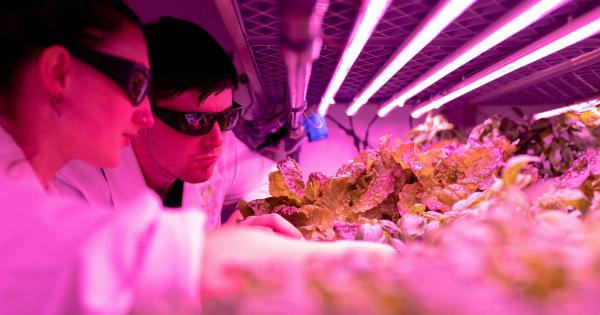The human immunodeficiency virus (HIV) has remained a global health crisis for decades, infecting millions of people worldwide.
Despite significant advances in antiretroviral therapy (ART) that can effectively control the virus, finding a cure or developing a preventive vaccine has proven to be an ongoing challenge.
Understanding HIV and its Impact on the Immune System
HIV attacks and weakens the immune system, specifically the CD4 cells, which are crucial in fighting off infections and diseases.
When left untreated, the virus can progress to acquired immune deficiency syndrome (AIDS), a condition where the immune system is severely damaged, leading to life-threatening opportunistic infections and cancers.
While ART can effectively suppress the virus and prevent the progression to AIDS, it does not represent a cure.
People living with HIV need to take antiretroviral drugs for life, which can have side effects and pose challenges in terms of adherence, accessibility, and cost.
The Promise of Immune System Upgrades
Scientists and researchers have long been searching for alternative strategies to combat HIV.
One promising approach lies in enhancing the immune system’s ability to recognize and eliminate the virus, ultimately leading to a functional cure or an effective preventive vaccine.
Various studies and clinical trials have explored different pathways to enhance the immune response against HIV. These approaches can broadly be classified into two categories: therapeutic vaccines and immune checkpoint inhibitors.
Therapeutic Vaccines: Empowering the Immune System
Therapeutic vaccines aim to teach the immune system how to recognize and attack HIV-infected cells more effectively.
Traditional vaccines work by training the immune system to recognize specific pathogens, stimulating the production of antibodies or immune cells that can neutralize or eliminate the infection.
However, developing a preventive vaccine for HIV has proven to be complex due to the virus’s ability to rapidly mutate and evade the immune response. As a result, therapeutic vaccines have been the primary focus of research.
These vaccines are designed to “boost” the immune response in individuals already living with HIV. By introducing specific viral proteins or genetically modified cells, they aim to target and eliminate HIV-infected cells more effectively.
While a functional cure has not yet been achieved, therapeutic vaccines have shown promising results in terms of reducing viral load, slowing disease progression, and prolonging the time until ART initiation.
Immune Checkpoint Inhibitors: Unleashing the Immune System’s Potential
Another avenue of research involves immune checkpoint inhibitors, a class of drugs that have revolutionized the treatment of various cancers.
These inhibitors work by blocking specific molecules that act as “brakes” on the immune system, allowing it to recognize and destroy cancer cells more efficiently.
Scientists are exploring the potential of immune checkpoint inhibitors in the context of HIV.
By blocking specific molecules that impede the immune response against the virus, these inhibitors aim to empower the immune system to recognize and eliminate HIV-infected cells without causing excessive inflammation or damage.
Preliminary studies utilizing immune checkpoint inhibitors in non-human primates infected with simian immunodeficiency virus (SIV), a virus closely related to HIV, have shown promising results in reducing viral reservoirs and controlling viral replication.
The Challenges Ahead: Overcoming Obstacles and Risks
While the research on immune system upgrades against HIV is promising, significant challenges remain on the path to a functional cure or a preventive vaccine. These challenges include:.
- Viruses’ ability to evade the immune response: HIV exhibits a high mutation rate, allowing it to constantly evade recognition by the immune system. Developing strategies that can overcome this viral escape remains a significant obstacle.
- Potential side effects: As the immune response is intensified, there is a risk of developing autoimmune reactions or excessive inflammation, which could harm the body’s healthy cells and tissues.
- Viral reservoirs: HIV establishes reservoirs in certain cells and tissues, where it remains hidden from immune detection and ART. Clearing these reservoirs presents a major challenge in achieving a functional cure.
- High cost of research and development: Advancing research and developing safe and effective immune system upgrades against HIV requires substantial financial resources and sustained commitment from governments, organizations, and stakeholders.
The Way Forward: Collaborative Efforts and Continued Research
Addressing these challenges necessitates collaborative efforts and continued investment in research and clinical trials.
Scientists, pharmaceutical companies, governments, and organizations need to work together to develop innovative strategies and establish robust clinical trial networks to evaluate the safety and efficacy of immune system upgrades in larger populations.
Furthermore, research should also focus on optimizing the current standards of care and treatment for individuals living with HIV.
Increasing accessibility to ART, improving adherence to treatment regimens, and reducing the transmission of the virus remain critical priorities.
Conclusion
The quest for a functional cure or a preventive vaccine against HIV has made significant progress with the advent of immune system upgrades.
Therapeutic vaccines and immune checkpoint inhibitors offer hope in enhancing the immune response against the virus, potentially leading to more effective treatments and eventual eradication.
However, it is crucial to acknowledge the complexity of HIV and the significant challenges that lie ahead. Continued investment in research, collaboration, and innovation is essential in the ongoing fight against this global health crisis.






























